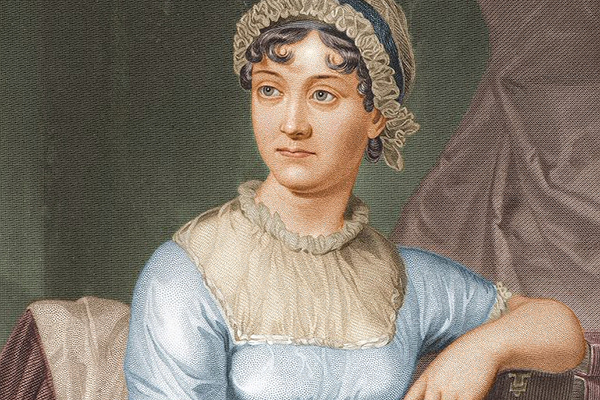Uncovering the story behind Jane Austen’s novels, 200 years later

Trailblazing English novelist Jane Austen lived in Bath for five years, from 1801 to 1806. During that time in the famed spa city of England, she would have witnessed theatrical performances by famous actors, attended balls, and read about slavery and the slave trade, said associate professor Nicole Aljoe, who is spending the summer retracing the Bath Austen would have known.
An expert in 18th-century literature, and a scholar of Austen’s works, Aljoe said that the novelist’s time in the city likely laid the foundation for part of her later novel, Northanger Abbey.
Today marks 200 years since Austen’s death on July 18, 1817. We talked with Aljoe to learn more about how her research might shift our understanding of Austen’s work and why it’s still so relevant more than two centuries later.
You’ve been researching the kinds of activities Jane Austen would have been engaged in while she lived in Bath from 1801 to 1806. What have you discovered?
The main thing overall was discovering how lively Bath was. There was a great diversity of activities, like plays and different kinds of theatrical performances where famous actors—like Sarah Siddons from London—would put on special shows. There were different kinds of balls, both open and invitation-only, and some specialized in different kinds of dances. There was also a variety of musical performances, circuses, and other fantastic performances like mesmerism.
I’ve also discovered that the Bath Herald, the major weekly newspaper in Bath during Austen’s time, included excerpts from U.S. and international newspapers and presented timely updates about global issues. Every week, the newspaper summarized debates in Parliament. Many issues also included advertisements for and reviews of recently published and popular texts like naval magazines and collections of travel narratives and maps on the front page. This suggests that, generally, folks were interested in reading about the navy’s activities—in light of the lull between European wars—and interested in scientific discoveries.
Bath was also full of stories about slavery and the slave trade, and announcements about abolitionist speeches were a regular occurrence in the papers.
Finally, Bluebeard, or Female Curiosity, a horribly melodramatic play, seemed to be put on very frequently—at least twice a year—at the Royal Theatre in Bath. I think it lays the foundation for part of the Gothic parody in Austen’s novel, Northanger Abbey.
All of these facets of life could have influenced or informed Austen’s work afterward.
Does your research change how we might interpret Austen’s work? If so, how?
It doesn’t so much change as help illuminate that the image we have of Austen as a shy and retiring writer is not an accurate one, and indeed might say more about our persistence in misunderstanding and misrepresenting female artists.
This research has also helped develop an understanding that Austen’s nuanced representations of human character came from direct experience and observation—of course, joined to her aesthetic strategies—the best known of which is her use of parody and satire.
Two hundred years after her death, we’re still talking about her work. What makes it so enduring?
I think it’s because she was such a fine observer of human nature. Unlike other novelists of the era, who focused on accurately representing their time and place, Austen’s novels provide nuanced representations of human nature and interiority that stand the test of time. As 2017 Man Booker prize-winning author Marlon James observed, Austen’s critiques of class and gender conventions in Pride and Prejudice remain relevant today.
What interesting themes or ideologies are present in her work that aren’t as often the focus of major interpretations of her work, such as in movie adaptations?
While the movies do a good job of focusing on Austen’s critiques of the oppressive nature of gender conventions during the late 18th and early 19th centuries, they don’t often pay enough attention to her critiques of conservative understandings about class and status at this time. England witnessed a great deal of social upheaval during this period. Although we certainly see some of this in Pride and Prejudice, with poorer and lower class Elizabeth marrying Darcy and telling off Lady Catherine DeBourg, it really shows up in her last novel, Persuasion—my personal favorite—which is all about the ways in which assumptions and the rules about class have been upended—the wealthy gentry of Lord Elliot and Lady Randall gave way to the merchant Musgrove family and the Navy in the person of Captain Wentworth.
What drew you to Jane Austen? What animates your study of her and her work?
Her work is just so amazing, and the few letters that we have that speak to her sharp wit are just so tantalizing. I never recognize the conservative, staid, marriage-crazy, pink-wearing version of Austen. For me, she is a fine and daring artist: the characterization of Lady Susan in one unfinished novel and her description of the “chilly” mixed-race West Indian heiress Miss Lambe in another are two of the most intriguing female characters in the era’s literature and makes me wish she hadn’t died so young so we could see what she would have done.





